What is RPA
and how does combining it with process intelligence help drive process excellence?
Robotic Process Automation has the power to supercharge organizations’ processes, performance, and their peoples’ job satisfaction.
Next to the power and potential of artificial intelligence and machine learning, RPA is often overshadowed as a driver of business improvement. But understood clearly and implemented properly, the number of transformative RPA use cases are extensive.

1. What is RPA?
RPA stands for Robotic Process Automation. RPA software uses ‘robots’ or simply ‘bots’ to perform many of an organization’s repetitive, high-volume tasks without needing human intervention.
These tend to be repetitive, rules-based tasks, such as form-filling, standardized reporting, matching POs to invoices and goods receipts, data extraction and insertion, or logging into systems and applications. All conducted at a scale, speed, and level of consistency far beyond the capabilities of human counterparts.
Understanding the scope of Robotic Process Automation
An RPA robot tends to do as it is told. They complete specific assignments according to specific parameters. An RPA tool will not 'think' beyond the boundaries of their set tasks, nor will they adapt to changes in the systems with which they interact.
While RPA services have become increasingly sophisticated, capable of more intelligent automation of complex tasks like interpretation of unstructured text or data, this is typically when used in concert with generative AI or machine learning platforms.
Nevertheless, automation software like an RPA platform can have a major impact on operational efficiency and process excellence, as long as the RPA implementation is conducted correctly (we'll get to that).

2. The benefits of RPA
While performing discrete, specific tasks, RPA services provide a range of important business benefits, including:
Resource savings: Automation of tasks can save a lot of time and money. The productivity of RPA bots is impressive. An RPA bot is capable of completing large volumes of work in a fraction of the time taken by human employees.
Employee satisfaction and deployment: With the more mundane tasks passed over to RPA software, employees are free to take on higher-value (more challenging and enjoyable) activities requiring human judgment and expertise.
Efficiency up, errors down: With RPA, the potential for human error is lessened. Bots don’t get bored or distracted plowing through low-level jobs. And with people to handle the exceptions or more complicated tasks, processes can be streamlined, departmental efficiency enhanced, bottlenecks reduced, and customer experience (often) improved.
Easier systems integration: RPA simplifies system integration, enabling even non-technical users to easily and cost-effectively combine data from disparate systems.
There is, however, a significant caveat to the achievement of these business benefits.
They won’t be achieved by an RPA solution in isolation. RPAs are one of the instruments in what needs to be an orchestrated, data-informed process of business transformation. It's vital to know where, how and why RPAs should be implemented before rushing into automation. Automating an inefficient process just amplifies and accelerates your inefficiency.
Without this, and pinning all your process improvement hopes to automation technology (like RPA) alone, is the equivalent of pinning your hopes of creating tasty breakfast cereal to the combine harvester that cut the corn or wheat. The machine played a key role in the process but there were a lot of other steps, systems and people involved.
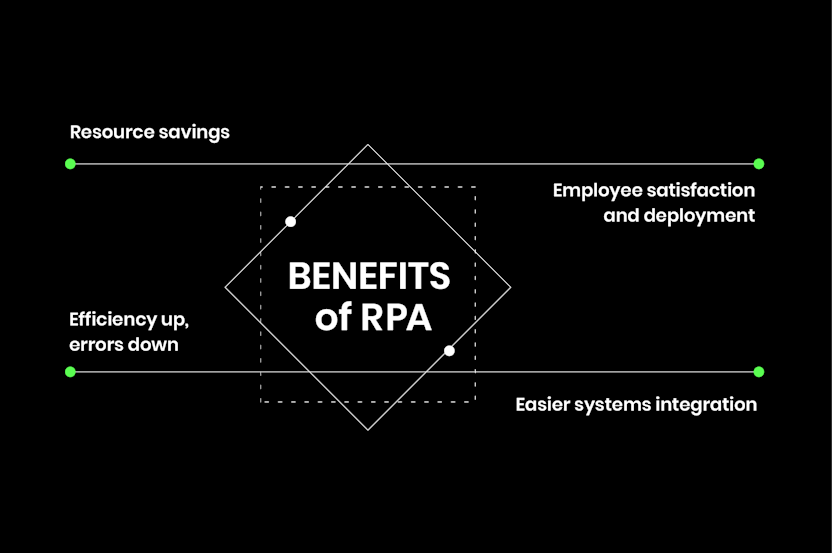
3. Typical RPA use cases
Unsurprisingly RPA use cases are plentiful in number. You can look to implement automation anywhere your organization has rules-based processes. Almost every business process or team has some form of repetitive, rules-based activity ripe for automation. That said, common use cases for robotic process automation include:
Data Entry: RPA is excellent for entering data into systems, removing the requirement for manually typed information.
Invoicing and Billing: Carefully supervised, RPA has had a lot of success in accounts payable and accounts receivable departments, creating invoices and managing bills, for example.
Customer Onboarding and Customer Service: When new customers sign up, RPA can assist in the onboarding process by collecting and organizing information swiftly, providing a serious boost to customer service.
Report Generation: RPA is effective in generating routine reports by collating data from multiple specified sources.
Inventory Management: RPA can help manage inventory by automatically updating stock levels, placing orders, and tracking shipments.
These examples represent just the tip of a substantial process iceberg. Essentially, if a task involves following a set of rules and doing the same steps repeatedly it could be a good target for RPA, but only if implemented properly, which is what we’ll look at next.
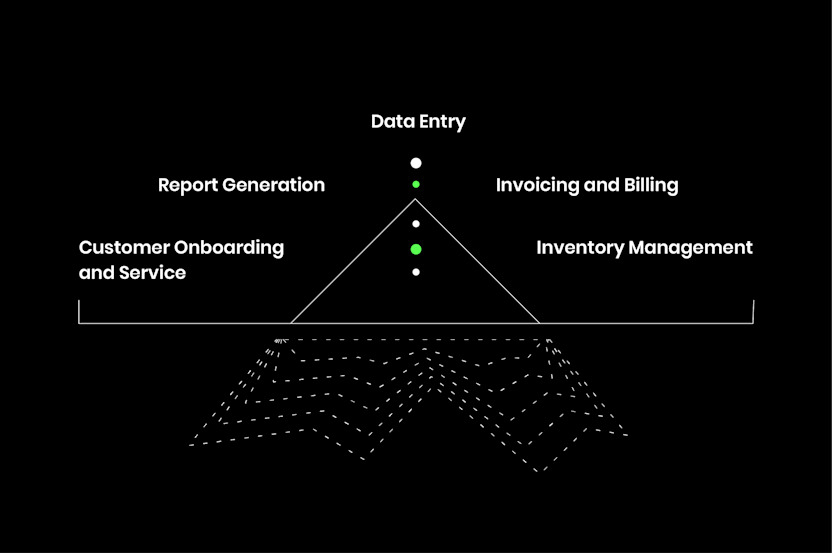
4. Successful RPA implementation requires process insight
There are great benefits available with RPAs. But they’re team players, part of the toolkit, not a first and final fix-all.
To get the most value out of robotic process automation, it's vital to start with a clear understanding of business-wide processes, their interactions, and their interdependencies. Business process management success is impossible without this understanding.
It’s even more crucial, however, to maintain process visibility throughout the automation process, using insights to shape and reshape RPA deployment. Businesses don’t operate in a vacuum; trading conditions change, priorities change, and processes need to change with them in order to deliver against business goals.
It’s estimated, for example, that as many as 30-50% of initial robotic process automation (RPA) initiatives fail because businesses target the wrong processes, automate inefficient processes, or fail to consider what happens to processes post-automation.
That’s why the end-to-end insights provided by process mining provide the perfect foundation for successful RPA implementation.
What’s process mining?
Process mining acts like an MRI for businesses, enabling organizations to visualize how their processes actually run in minute detail, and in every variation, identifying any execution gaps. This information is extracted from real-time event logs in an organization’s systems.
Celonis has taken these capabilities much further. With innovations such as the Celonis Object-Centric Data Model, which uses object-centric process mining (OCPM), organizations can access end-to-end maps of their complex business processes and how they interact with each other.
How will Celonis' process mining help with RPA implementation?
Process mining, particularly with Celonis, supercharges any RPA implementation in two key ways:
1. Optimize the right processes: With RPA implementation still at the planning stage, the Celonis system helps organizations pinpoint the processes where process automation would add greatest value to business performance. Analysis of the systems-generated data provides a clear picture of how processes really operate (not how they were designed to operate). This enables process transformation leaders to optimize automation investments, while avoiding the risk of automating inefficient processes.
2. Situational awareness: More importantly, these insights deliver process observability, a situational awareness of end-to-end processes that enable the detection of any anomalies. Detection then triggers intervention via the activation of RPA solutions. Here’s a quick example. Through the visibility process mining provides, an organization discovers that one of its invoices was incorrectly processed because the same individual checked and approved it. This violation of policy is flagged and an RPA bot triggered to block the invoice from being paid without being rechecked properly. This situational awareness enables the organization to fix an issue before it becomes a potentially expensive problem. The implications of this approach are significant. It means that the first time you discover a particular glitch in a process, should also be the last time. With this situational awareness, the system can create and automate countermeasures to overcome process anomalies. So the next time the same issue is detected, RPA bots are triggered to react immediately (24-7, 365 days a year).
This also means that the Celonis system enables post-automation process monitoring to ensure automations are performing according to plan and are adjusted as the business environment or organizational goals change.
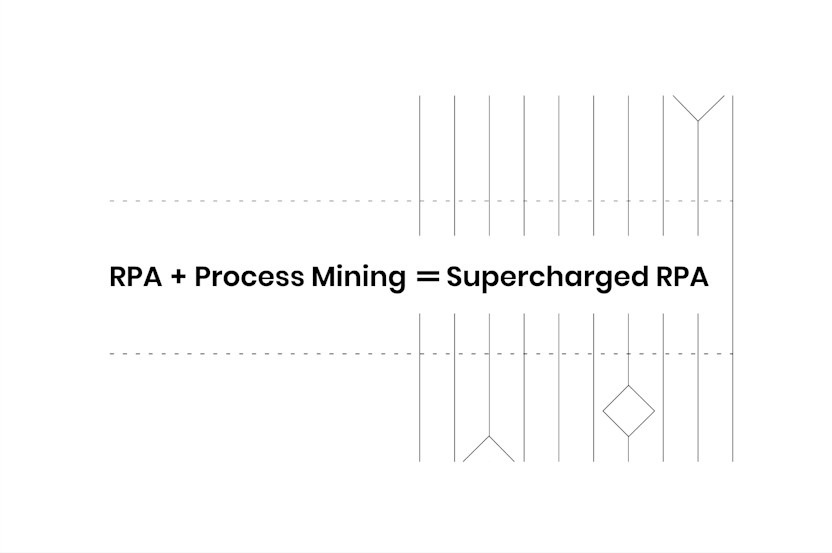
5. Orchestrate RPAs with Celonis
With this end-to-end process visibility and capacity to detect anomalies, the Celonis platform provides the insight and the instruments to orchestrate process automation, whichever RPA vendor or solution is used.
Celonis is tech agnostic. The automation scenarios described in the previous section don’t just apply to automating processes with our technology, but also to triggering all available RPA software within a customer’s tech ecosystem. Our approach is designed to amplify the effectiveness of any existing automation solutions (if they’re not broken we won’t try to fix them).
That said, Celonis also provides its own solutions for defining and orchestrating process automations in the form of Action Flows.
Action Flows allow you to automate any business workflow according to your needs and provide a powerful means to activate and control an RPA software robot (or many software robots).
Where RPA is the 'doing' (i.e., the actual automation of a task), Action Flows provide the thinking, connective tissue and orchestration, defining the required steps in the automation process.
What's more, Action Flows contain many plug-and-play integrations and intelligent automations that can trigger actions directly within operational systems like SAP, Oracle or ServiceNow.
Action Flows and RPAs work together to create significant business benefits because:
Action Flows use real-time process insights from the Celonis platform to trigger specific RPA robots for specific tasks in response to specific events, changes or requirements.
Combining Action Flows’ API-led automation with the UI-led automation provided by RPA means an organization’s entire process landscape can be automated in a single workflow.
Ultimately, however, RPAs can be activated by Action Flows or applications from other RPA vendors (or both). But the real strength of the Celonis platform, in terms of RPA, is its ability to orchestrate all available technology to detect problem processes and deliver automated solutions.
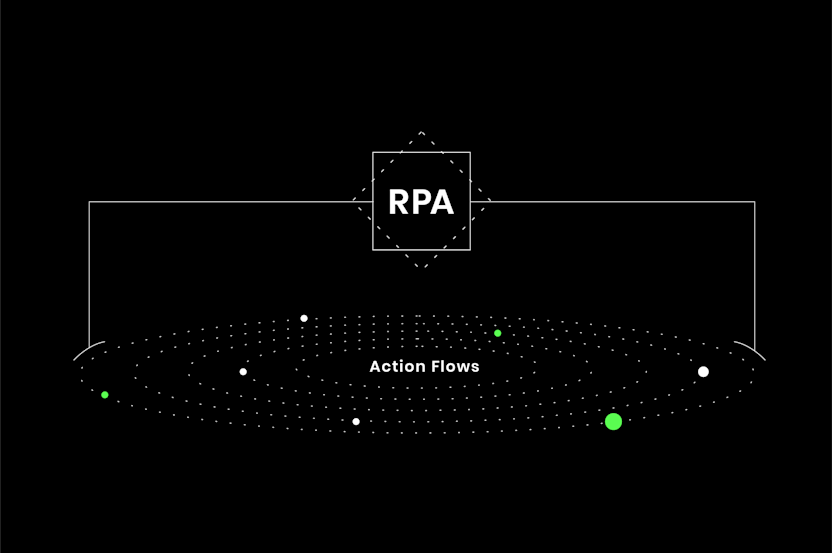
6. Make process automation even simpler
Automating tasks across a business-wide environment can be a daunting prospect — even with RPA solutions controlled by purpose-built systems such as Action Flows.
But Celonis has made the robotic automation of processes even simpler.
With the acquisition of Make (formerly Integromat) in 2020, Celonis customers can now access an intuitive visual platform with which to design, build and automate almost anything, with no coding required.
From tasks, processes and workflows to apps and systems, the Celonis platform provides an easy path to clean automations, including hundreds of out-of-the box integrations with everyday systems.
Your whole RPA process or RPA system is rendered straightforward, even when automating processes from disparate legacy systems.
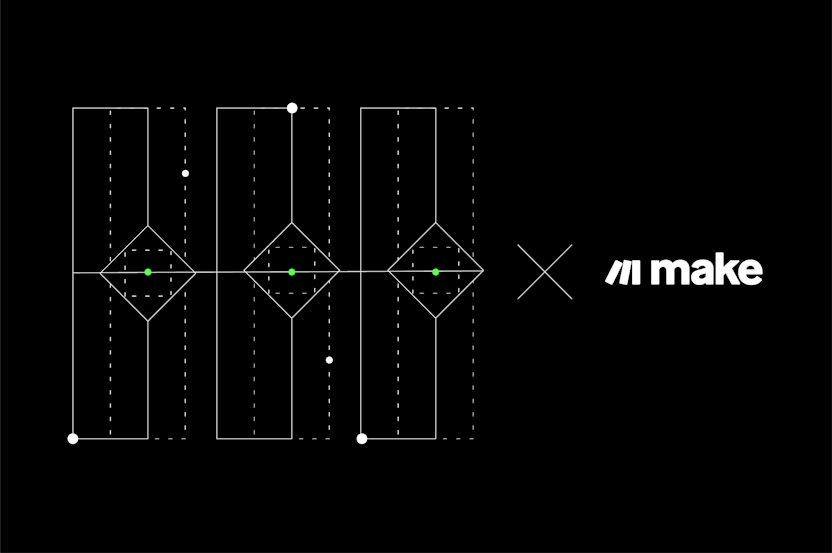
7. Process Automation Success Stories
Leading brands are enjoying considerable process automation success putting those software robots to work with Celonis. Here are just a few examples:
PepsiCo unlocks millions in Accounts Receivable: See how PepsiCo unlocked millions of dollars in accounts receivable using Action Flows and RPA to automate the creation and dispatch of dunning notes to collect on overdue customer payments.
Reckitt identifies and delivers business-wide efficiencies: In pursuit of a digital-first culture, automation and process mining has enabled Reckitt to identify and realize value across multiple functions including human resources, procurement, finance and sustainability.
Conrad Electronics enhances customer experience and reduces costs: Intelligent automations through Action Flows has transformed order management, with blocked orders down by 30% and automation rate up from 51% to 79% (meaning ever more on-time orders).
8. A final thought on RPA
Powered by the insights and situational awareness provided by process mining and process intelligence, RPA technology can have a significant impact on an organization’s productivity, efficiency, cash flow and revenue. Automated RPA countermeasures provide a vital line of defense against process anomalies that evolve with business strategies and the trading environment.
In the coming months further explorations of how RPA interacts with AI will add new, innovative use cases for intelligent automation. A new chapter of RPA-driven value creation is just around the corner.